Unpack This Article's Arsenal
- 44 Magnum vs. 454 Casull Introduction
- 44 Magnum vs. 454 Casull – Beyond Ballistics
- History of the Magnum Revolver
- 44 Magnum vs. 454 Casull – The Boring Numbers
- Available 44 Magnum, 454 Casull Firearms
- 44 Magnum vs. 454 Casull – Conclusion
- Winner Between the .45 Caliber and the .454 Casull Caliber?
- Recommended Reading
Get Great Guns And Ammo Deals!
SAFEST NEWSLETTER - WE WILL NEVER SELL YOUR EMAIL
No Spam - No Selling Your Email
44 Magnum vs. 454 Casull Introduction
I recently got an email from Taurus about one of their newer lines of big bore magnum revolvers, the Raging Hunter series, which was initially available only in .44 Magnum. Apparently it will soon be available in a new chambering. That’s right the 454 Casull.
Their new Raging Hunter has been steadily increasing in popularity and starting this month, they are producing the same line of revolvers but chambered in the more potent .454 Casull. This really shouldn’t come as a surprise to anyone, especially those who are into wheel guns.
We’re all aware of the popularity of this Brazillian company’s Raging series, i.e. the all-steel Raging Bull line and the massively built but highly versatile Raging Judge revolvers. Indeed, I wasn’t surprised by their announcement of a newer, lighter .454 Casull handcannon — on the contrary, I was getting impatient waiting for it.
But now that they’re making them, one of the questions myself and other people are asking is, does owning a .454 Casull revolver make sense considering the numerous .44 Magnum loads and revolvers out there to choose from?
What’s the Point of Comparing 44 Magnum vs. 454 Casull?
You might be wondering: why do people even bother comparing these two cartridges? Both are big bore magnum revolver calibers way too powerful for concealed carry personal defense. Either is a great option for hunting medium game. The .454 Casull having more oomph than the .44 Magnum has no issues taking down large game, but with the right load and bullet type, the .44 Magnum will be suitable for that purpose as well.
But to us true red-blooded men, one can never have too much power in a handgun. Case in point: hot .357 Magnum loads have been proven to take down up to bear-size game back in the 1930s when it was released (even up to today some people swear by its power) — yet its creator still felt a need to come up with something more powerful. If that’s not a good enough argument, have you ever asked yourself why the .500 S&W Magnum exists in the first place?
If we’ll adopt a fairly simplistic point of view (which can be helpful at times) and only compare calibers on their ballistics, the higher energy caliber will be the winner all the time, no question. Everyone knows the .454 Casull is more powerful than the.44 Magnum. But as with most things in life, comparing calibers is never easy — heck, you wouldn’t be here if it was, would you?
44 Magnum vs. 454 Casull – Beyond Ballistics
There are things to put into consideration besides just ballistics: load varieties, popularity, and demand which greatly affect pricing and availability. Demand also directly affects the number of firearms being manufactured for a particular caliber. The more firearms are being manufactured, the cheaper they get, and the better for us all.
If you’re looking to get your feet wet in the world of big bore magnum revolver calibers and you’re trying to decide which of the available firearms for these two you should buy, you might want to read through this article. Hopefully, by the end of this, you’d be so knowledgeable on this subject that people would think you’re a magnum revolver expert.
History of the Magnum Revolver
If you’ve read some of our write-ups on magnum revolver-related stuff here on GND, you may have noticed that we tend to include info on the legendary Elmer Keith. Wheelgun purists know that name well, being it’s synonymous with the word “magnum” in the context of revolver calibers.
Indeed, if you’re someone who knows your guns, the mere mention of Elmer Keith’s name should paint pictures in your head of an outdoorsman-hunter-writer who also happens to be an authority in handloading revolver cartridges and a gun-nut with friends in high places.
What he did for the .38 Special (i.e. he hot-loaded it to ballistic levels well above what its original factory loadings made it capable of), he also did for the .44 Special. Now some of you might ask, what is the .44 Special?
The 44 Special’s Potential Realized
As one of the few surviving revolver calibers from more than a hundred years ago (112 years to be exact, i.e. it became available in 1907) and one of the earliest smokeless powder cartridges, it’s sad how there aren’t a lot of particularly noteworthy things going on with the .44 Special cartridge. If you’re the average shooter who likes to buy factory ammo, this caliber is pointless.
Some might say the cartridge can be real accurate by virtue of the fact that it was designed for target shooting, but I would personally have to disagree. To me, with very few exceptions, guns manufactured to specs no matter the make and caliber will always be more accurate than the people shooting them.
Looking at the numbers, anyone would easily dismiss the .44 Special as one of the heavy and slow-moving bullet types, almost comparable to the .45 ACP out of a standard 5-inch barrel except its was fifty to a hundred feet per second lower. Next to John Moses Browning’s 45-caliber brainchild, factory loads for the .44 Special were surprisingly weak.
But the cartridge wasn’t so bad — especially for those who handload their own ammo. Enthusiasts from back when the .44 Special was introduced knew that it had a lot of potential that could only be realized by meticulous load development. There were even a few authorities on the subject claiming the .44 Special is one of the best cartridges ever made — Elmer Keith was one of them.
Elmer Keith Memoirs
He wrote in one of his memoirs that in the 1930s shortly after abandoning his .45 Colt, when he was still casting bullets for his hot-loaded .38 Special (i.e. even before the .357 Magnum became a thing), he had always wanted to shoot heavy .44 Special loads from his S&W New Century, a.k.a. the Triple Lock.
Just Another Magnum Cartridge
After years of experimentation, Elmer Keith’s efforts compelled Remington to produce the first commercially available .44 Magnum ammunition and Smith & Wesson to build the Model 29 revolver in 1953. As with the .357 Magnum, he made the suggestion to lengthen the .44 Magnum’s case so it won’t chamber in .44 Special revolvers.
In February of the following year, Elmer received a prototype of what would later become the S&W (Smith and Wesson) Model 29 and the first few runs of ammo manufactured by Remington for testing. And in 1955, the .44 Magnum was formally introduced (it was initially referred to by everyone as the .44 Remington Magnum but these days nobody calls it that).
Unfortunately for its parent cartridge — the .44 Special fell into obscurity, even with the efforts of yet another legendary gun expert, Skeeter Skelton, to revive it.
As a shooting platform, both the S&W Model 29 and the .44 Magnum would become a huge hit among enthusiasts. And with more and more .44 Magnum-chambered firearms and ammo being produced every day, interest in this large bore handgun caliber will remain strong in the foreseeable future.
So much for the .44 Magnum and its parent cartridge. Let’s now shift gears to another parent cartridge — or rather, a grandparent, being it is one of the oldest centerfire cartridges surviving the black powder era and predates even the old dinosaur .44 Special by a good 35 years: the .45 Colt, which to a lot of people is also known as the .45 Long Colt.
The .45 Colt Beckons
Most people may not realize it, but the .45 Colt is the grandfather of more than a few .45-caliber cartridges: chief among which is the .45 ACP (and consequently, its derivatives from much later on — numerous child calibers like the .45 Winchester Magnum, .45 GAP, .45 Super, 451 Detonics, 460 Rowland, etc).
Around five decades after its inception, the .45 Colt would become the basis for the development of two of the most powerful .45-caliber magnum cartridges known to man: the .454 Casull, and the relatively more recent .460 S&W Magnum. I think the .45 Colt should have been named the .45 Special because, despite Elmer Keith’s arguments against it, it truly is special.
Despite being one of the oldest big bore centerfire cartridges and being able to withstand significantly lower chamber pressures compared to modern smokeless powder cartridges (no thanks to its thinner wall designed from the black powder era), to this day the .45 Colt is still a viable option for personal defense and hunting up to the medium-size game.
Heyday of the .45
In its heyday, no other handgun cartridge can match the .45 Colt in terms of ballistics performance. This is because it was originally designed to knock down horse-mounted troops and reportedly, even the horses themselves whenever knocking them down had to be done too.
But even with the .45 Colt’s impressive knockdown power, a few decades after its birth, its smaller and weaker revolver cartridge cousins (the .38 Special evolving to the .357 magnum and the .44 Special being hot-loaded by Elmer Keith to insane pressures) started to eclipse it in both ballistics performance and popularity.
This is the part where some hardcore .45 Colt fans might argue that there exist .45 Colt loads with ballistics rivaling and sometimes even exceeding that of the .44 Magnum. Yes, thanks to the Internet we are now all aware of what this cartridge is really capable of. But they’re missing the point.
Before the .44 Magnum was introduced, people stopped caring too much about the .45 Colt because of two reasons: the showstopper known as the .357 Magnum, and fans of the .44 Special selling it non-stop as the finest cartridge to have ever existed. People only started developing hand loads for the .45 Colt as a result of two men’s painstaking labors and a gun magazine raving about the subject.
An Uphill Battle
Not too many sources are available on the subject but what we know is, in the early 1950s long before the .44 Magnum came out, custom revolver gunsmith and wildcat cartridge developer Dick Casull (another acquaintance of Mr. Keith’s) and a friend of his, Jack Fulmer, started playing around with several different loads for the .45 Colt.
What Dick and Jack set out to prove was that even with its outdated black-powder-era thin walls, the .45 Colt case can be hot-loaded to higher pressures, and when fired from a robustly-built revolver, it is capable of unprecedented levels of ballistics, far exceeding that of the most powerful cartridge at the time, the .357 Magnum. Some of the loads they developed approached and even exceeded .44 Magnum power levels (albeit the gains being only marginal).
The gentlemen’s experimentations entailed messing around with a wide variety of different powder types, powder arrangement structures (duplex and triplex charges) and bullet weights. All this time cylinders and top straps were being blown off the few Colt SAA revolvers they were using for testing.
Dick determined that having six chambers in the cylinder made its walls thinner, so with the help of his gunsmith employer (who was also a writer for Guns & Ammo magazine), P.O. Ackley, he ended up with a hand-built custom revolver that had a five-shot cylinder, re-heat-treated frame and a barrel with 1:24 twist rate.
The New King of the Magnum Hill
The custom revolver and the powerful 45-caliber wildcat cartridge which Dick called the .454 Magnum first appeared under P.O. Ackley’s column in the November 1959 issue of Guns & Ammo magazine. The .44 Magnum was only four years old at the time.
But as with all other cartridges that started out as a wildcat, factory loads for the new .454 Magnum were non-existent. It would slowly catch on until it becomes a proprietary round with Federal in charge of forming the brass and a company called Freedom Arms (which Dick Casull founded with yet another gun nut, Wayne Baker in 1978) loading the cartridge. And like the .44 Magnum, the case was lengthened so it won’t chamber in .45 Colt revolvers.
In 1983, Freedom Arms built the first production revolver, the five-shot Model 83 single action, as a dedicated pistol for use with the .45-caliber magnum cartridge which was only then christened as the .454 Casull. In the next 10 or so years, it would go mainstream and reign as the most powerful production handgun cartridge in the world with Ruger and Taurus releasing their own line of DA/SA revolvers chambered for it.
Not joining the party for way too long, Smith & Wesson introduced their X-frame line of revolvers in 2005, the biggest production revolvers ever built. Within that line is their XVR (eXtreme Velocity Revolver) built for a new round they developed — the .460 S&W Magnum, a super-magnum-class cartridge that is essentially a more powerful version of the .454 Casull. Thus, the XVR chambers both the .460 S&W Magnum and .454 Casull, as well as the .45 Colt.
44 Magnum vs. 454 Casull – The Boring Numbers
Now that we’re done with all the historical bit, let’s look at some ballistics-related figures. Below is a helpful (if not a little boring) table with all the numbers you might need if you’re one of the geeks among us.
| A | B | C | D | E | |
| 1 | Calibers and specs | .44 Special | .45 Colt | .44 Magnum | .454 Casull |
| 2 | Bullet diameter (in) | 0.429 | 0.452 | 0.429 | 0.452 |
| 3 | Case neck diameter (in) | 0.457 | 0.480 | 0.457 | 0.480 |
| 4 | Case base diameter (in) | 0.457 | 0.480 | 0.457 | 0.480 |
| 5 | Case length (in) | 1.160 | 1.285 | 1.285 | 1.383 |
| 6 | Early bullet weight (gr) | 246 | 250 | 250 | 230 |
| 7 | Factory hot load bullet weight (gr) | 230 | 300 | 340 | 360 |
| 8 | Early velocity (fps) | 755 | 1050 | 1300 | 1800 |
| 9 | Factory hot load velocity (fps) | 1200 | 1193 | 1425 | 1425 |
| 10 | Early muzzle energy (ft. lbf) | 311 | 612 | 938 | 1654 |
| 11 | Factory hot load muzzle energy (ft. lbf) | 735 | 948 | 1533 | 1623 |
| 12 | SAAMI pressure rating (psi) | 15,500 | 14,000 | 36,000 | 65000 |
We included the numbers for .44 Special and .45 Colt in the table for a bit more context. A few things to note:
- Early (and even some modern) factory loads for the .44 Special specified a 246-grain bullet with a velocity of around 755 feet per second. It produces muzzle energy (cell B10) lower than some .38 Special (i.e. overpressured +P) loads.
- One of Elmer Keith’s hot loads for the .44 Special calls for a 230-grain bullet on top of 18.5 grains of Hercules #2400 powder. This load produces a velocity of 1,200 feet per second and muzzle energy (cell B11) that easily surpasses the previously untouchable .45 Colt and even the .357 magnum which, at the time, was the most powerful cartridge in the world.
- The early .45 Colt loads produce only up to 612 foot-pounds of force but today, modern hot loads utilizing heavier bullets can go significantly higher (cell C11), approaching and even slightly surpassing entry level .44 Magnum ballistics. But these hot .45 Colt loads should only be loaded in strong revolvers like the Ruger Bisley.
Hottest .44 Magnum Loads
- Today’s hottest .44 Magnum loads marked with a +P+ can produce muzzle energies (cell D11) that nip at the heels of even the hottest .454 Casull loads. But manufacturers of these hot loads (Underwood and Buffalo Bore) both have a disclaimer: these should not be loaded in just any .44 Magnum revolver.
- Factory .44 Magnum standard loads have a SAAMI-recommended pressure rating of 36,000 PSI; +P variants do not have a SAAMI-specified pressure rating, nor do +P+ loads. If you’re the type who chooses to err on the safe side, it’ll be safer to develop your own hot loads with your recoil tolerance and your revolver’s longevity in mind.
- For quick reference, one of the hottest .44 Magnum hand loads available online (from Hodgdon) has a max load that calls for a gas-checked 330-grain lead flat nose on top of 20.8 grains of H110 using large pistol primer. This produces a velocity of up to 1,350 feet per second and muzzle energy of 1,335 ft-lbs out of an 8.275″ test barrel.
- The .454 Casull remains unsurpassed in this caliber showdown as far as ballistics. If you want raw power out of the box with zero tinkering involved and you’d rather not worry about whether or not your firearm could handle the heat of such a powerful round, you really should just go with the .454 Casull. That’s not to say powerful hand loads for this cartridge don’t exist though.
- Data for .454 Casull hand loads using bullets with weights similar to that of the previously specified .44 Magnum hand load is available everywhere online. One of which has a max load that calls for a gas-checked 335-grain lead flat nose on top of 26 grains of RAMSHOT Enforcer using a small rifle primer. This produces a velocity of 1,530 feet per second and muzzle energy of 1,741 ft-lbs out of a 7.5” test barrel.
Boring Points
Considering all the points mentioned, the following assumptions can be made: one, factory .44 Magnum ammo has seen huge improvements as far as ballistics with the hottest loads approaching .454 Casull numbers but no one (save the manufacturers) is privy to these loads’ pressure ratings. If you’re not sure whether or not your particular firearm would handle non-standard hot loads, you should contact the manufacturer.
And two, if you want power without the risk of blowing your hands, .454 Casull factory ammo does not exceed SAAMI pressure limits, making them a safer bet. Any revolver chambered for this caliber will have no problem shooting any factory load. The only downside to these is their price.
44 Magnum vs. 454 Casull – Pricing Differences
Below is yet another boring but important table with data on some of the most common factory loads available for the two competing cartridges. If you’re a skimmer you can just look at the figures under column G (Per-round price).
| A | B | C | D | E | F | G | |
| 1 | Caliber | Brand | Bullet weight | Velocity | Muzzle energy | Price per box | Per-round price |
| 2 | 44 Magnum | Remington SP | 180 | 1610 | 1036 | $32.75 | $0.66 |
| 3 | 44 Magnum | Underwood XTP | 300 | 1200 | 959 | $20.75 | $1.04 |
| 4 | 44 Magnum | Double Tap Keith SWC | 240 | 1455 | 1128 | $55.30 | $1.11 |
| 5 | 44 Magnum | Federal JHP | 180 | 1460 | 852 | $24.00 | $1.20 |
| 6 | 454 Casull | Hornady XTP | 300 | 1650 | 1813 | $29.99 | $1.50 |
| 7 | 454 Casull | Magtech SJSPF | 240 | 1180 | 742 | $31.00 | $0.62 |
| 8 | 454 Casull | Underwood XTP | 240 | 1900 | 1923 | $32.50 | $1.63 |
| 9 | 454 Casull | Garrett Inc. H454 | 365 | 1500 | 1823 | $100.00 | $2.00 |
| 10 | 44 Magnum | Garrett Inc. Hammerhead | 330 | 1300 | 1238 | $100.00 | $2.00 |
| 11 | 44 Magnum | Buffalo Bore +P+ | 340 | 1480 | 1653 | $45.63 | $2.28 |
| 12 | 454 Casull | Federal Barnes Expander | 250 | 1530 | 1299 | $54.00 | $2.70 |
It shouldn’t come as a surprise that .44 Magnum ammo in general, has some of the lowest per-round prices on the list. But this isn’t because it’s weaker — it just happens to be more popular, having been around for longer (and also thanks in no small part to Clint Eastwood).
There might be some outliers like the Hammerhead from Garret Inc. or the +P+ offering from Buffalo Bore — two of the more expensive .44 Magnum factory ammo on the market today. But that Federal Barnes Expander in row 12 isn’t going to help the .454 Casull’s case in this pricing match-up. So despite the two relatively overpriced .44 Magnum offerings, the .454 Casull is still going to be the tougher sell.
If you want our recommendations for either cartridge, for the .44 Magnum we’d go with Double Tap’s Keith SWC and Underwood’s XTP, as both are going for only around $1.10 a pop. For the .454 Casull the only bang-for-buck offering is Hornady’s XTP, but people who are into this caliber typically get into handloading so we wouldn’t even bother recommending any ammo brand.
Available 44 Magnum, 454 Casull Firearms
|
Firearms availability is an advantage the .44 Magnum has over the .454 Casull.
This is common knowledge among revolver enthusiasts, but what they typically don’t tell you is how big of an advantage this is.
To try to understand just how big, let’s take a look at the websites of three of the most prevalent revolver brands in the world: Taurus, Ruger and Smith & Wesson.
If you go to Taurus’ website and do a quick search for revolvers in .44 Magnum, they currently have 13 different revolver SKUs in that caliber in varying chamber capacities, barrel lengths, and finish. Doing the same search for revolvers in .454 Casull returns 12 different revolver SKUs.
Head on over to Ruger’s website and do a search for .44 Magnum revolvers, they have 13 different single-action models and 11 different DA/SA models all with the varying finish and barrel lengths totaling 25 different models. Do the same search for .454 Casull revolvers and you only get two single-action and three DA/SA totaling only five different models.
Do the same search on Smith & Wesson’s website and you’ll find 19 different revolvers chambered for the .44 Magnum but only two models are listed as .454 Casull-chambered revolvers (this is incorrect though because if you do a search for revolvers chambered in .460 S&W Magnum, you’ll see a total of seven). Technically, Smith & Wesson doesn’t offer a single .454 Casull revolver (because who buys a S&W XVR to shoot .454 Casull anyway?) — but we’re including the seven XVRs anyway.
Summary of .45 vs. .454 firearms.
Summing up this section, the big three offer a total of 57 different .44 Magnum revolvers and only 24 different .454 Casull revolvers. Note that we didn’t even include lesser-known .44 Magnum revolver models manufactured outside of America (e.g. Astra, Llama) and older discontinued models (e.g. Dan Wesson Model 44, Colt Anaconda) — there are a ton of those that do not have a competing .454 Casull revolver.
44 Magnum vs. 454 Casull – Conclusion
If you made it this far without skipping any sections of the article, you won’t need to read through our conclusion. By now everything should be clear to you. But if you were in a hurry and needed to make a quick decision, here’s the TL;DR version of this article:
Article Summary
- There are at least two super hot .44 Magnum +P+ loads on the market approaching .454 Casull power levels, so as far as ballistics, we can say the line has been somewhat blurred. But because ammo manufacturers do not follow SAAMI-recommended pressure ratings for these +P+ loads, we can’t recommend them in good conscience.
- Despite those hot .44 Magnum loads, the .454 Casull is still the more powerful caliber. Because .454 Casull brass is rated for almost double the amount of pressure that .44 Magnum brass can handle, and because ammo manufacturers have no need to hot-load an already hot cartridge, you can’t go wrong with any .454 Casull factory loads.
- Factory .44 Magnum ammo is generally much cheaper than .454 Casull ammo, so as far as ammo prices the .44 Magnum wins.
- If you want to shoot .454 Casull without breaking the bank, you’ll have to hand load your ammo. But the same could be done for the .44 Magnum too, so as far as handloading, there’s no real winner here.
- There are far more revolvers chambered for the .44 Magnum than there are for the .454 Casull, so as far as firearm availability, the .44 Magnum wins.
Winner Between the .45 Caliber and the .454 Casull Caliber?
Wrapping things up, while the .454 Casull is still practically untouchable as far as ballistics, the .44 Magnum has advantages in pricing and availability as far as ammo and shooting platforms — two very important things to consider when making a purchase. We, therefore, declare the .44 Magnum the winner of this magnum revolver caliber showdown.
Recommended Reading
The Best .357 Magnum Revolvers






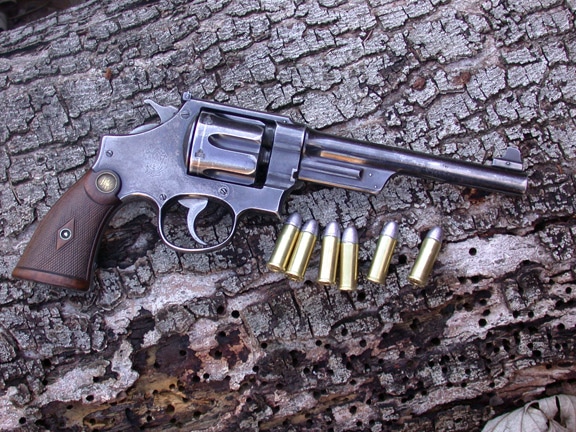
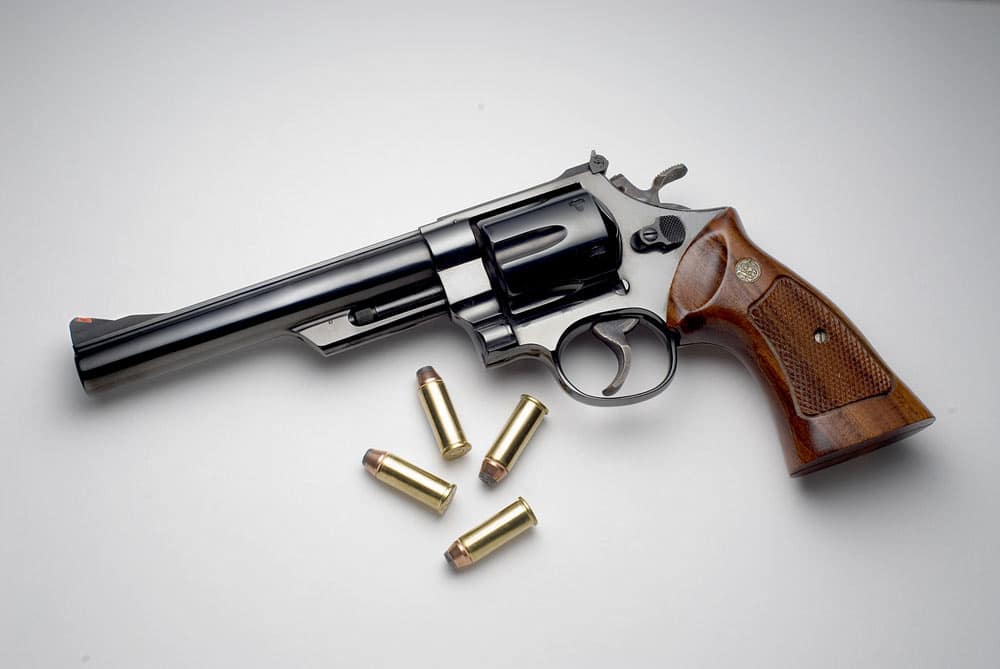
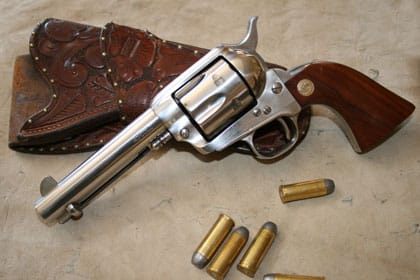
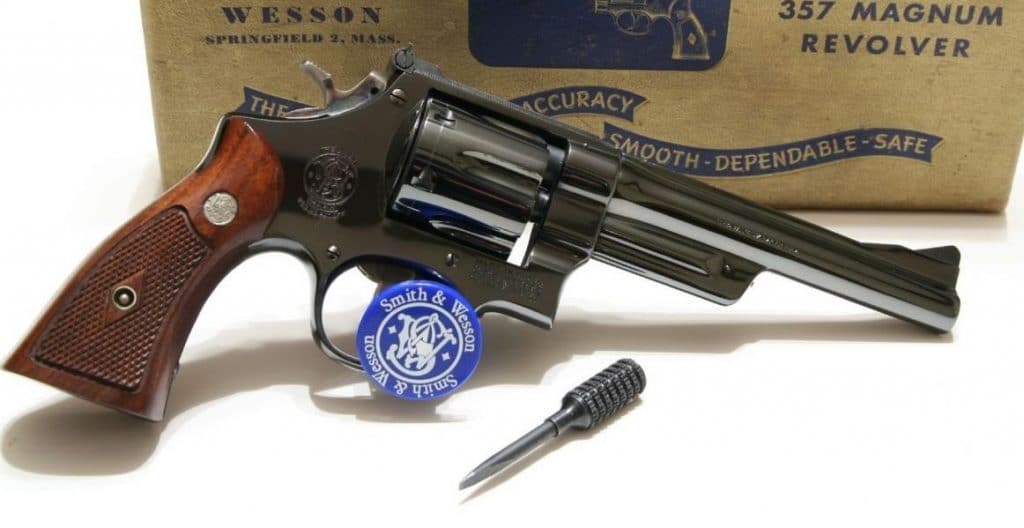
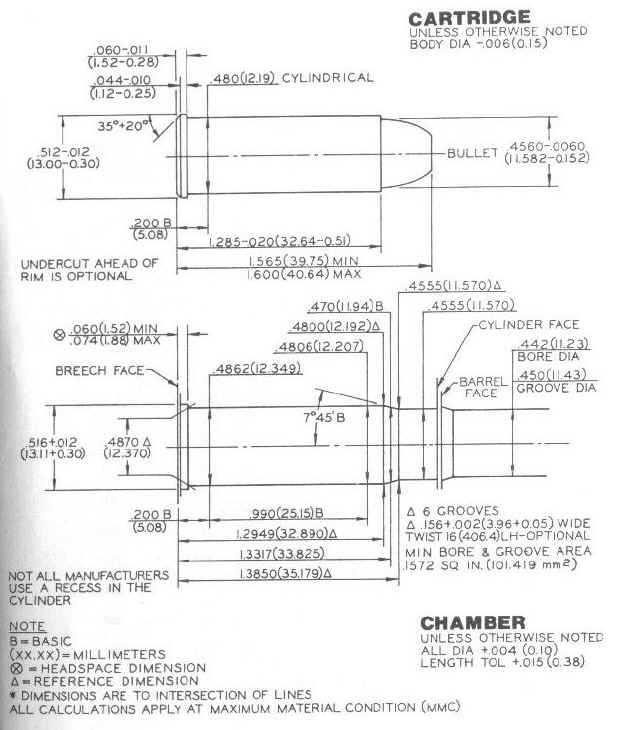
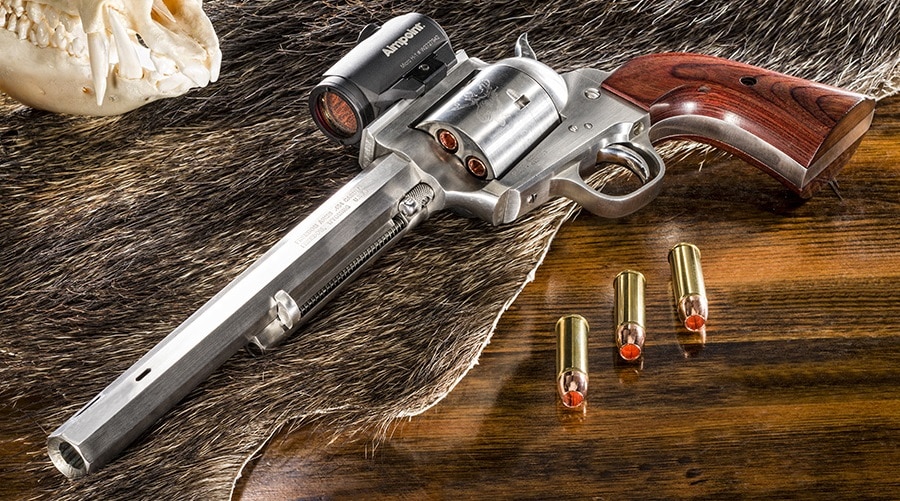

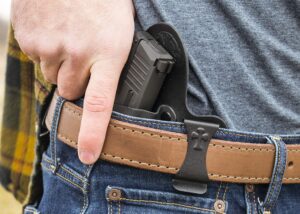
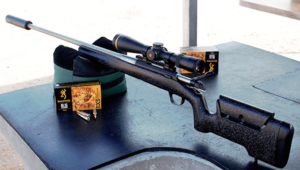
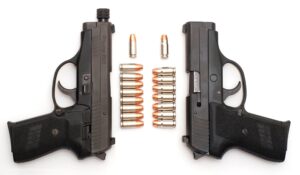
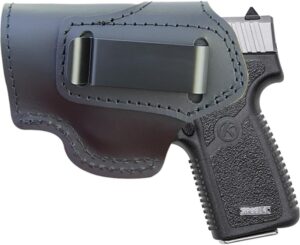
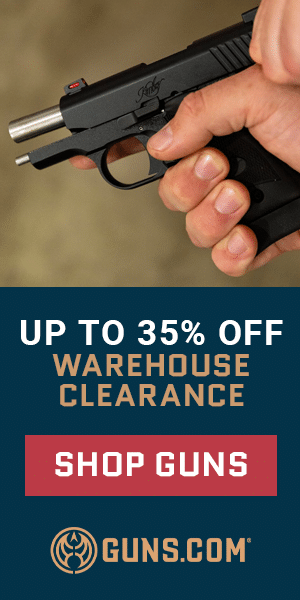


2 Responses
Owning both I have to give the 454 casual the edge,where I buy my ammo there’s slight difference in price but the 454 has a substantial superiority in power and isn’t a pipe bomb when it comes to shooting I’ve found both to be accurate but the 454 has the edge in range too. Both are quite a firearm but I’ve found the 454 to be superior.
Thanks for the great article! I think one very important point is missed. A pistol chambered for 454 can shoot 45. Therefore the 454 wins as it takes points 1, 2, 3 (via 45), and 4 becomes irrelevant.
I my case, I hunt with 454 and play with 45.